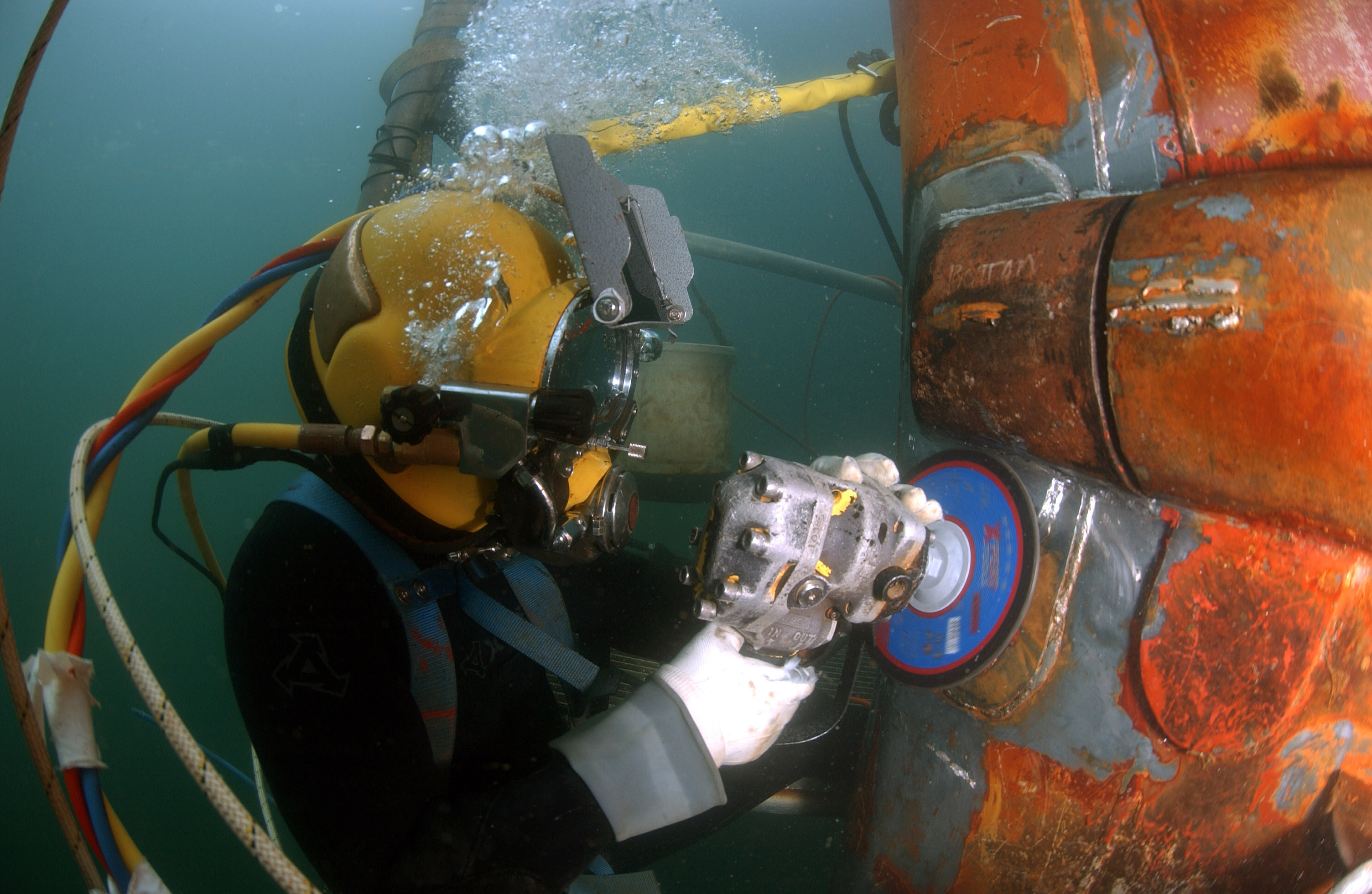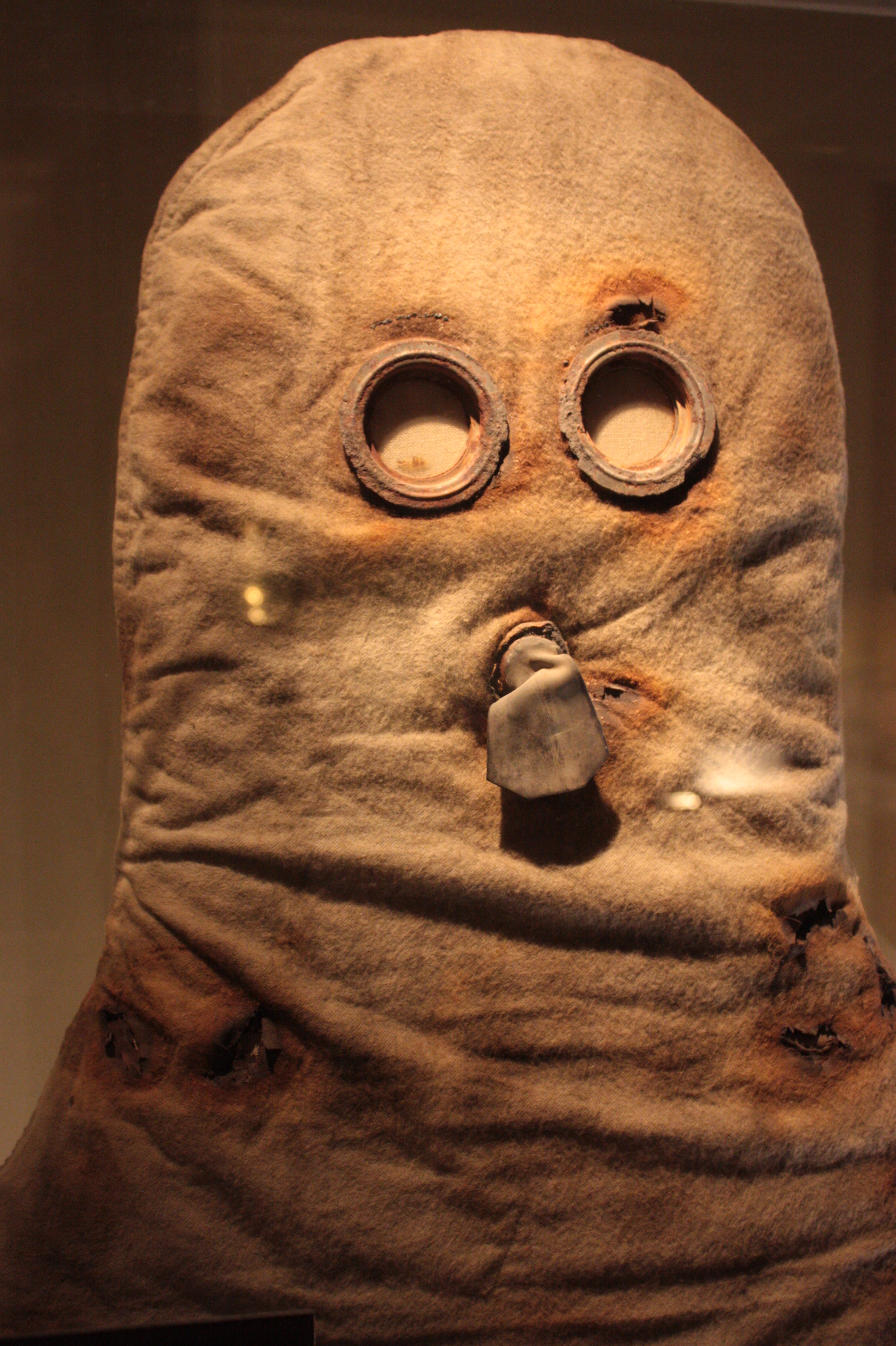|
Full Face Diving Mask
A full-face diving mask is a type of diving mask that seals the whole of the diver's face from the water and contains a mouthpiece, demand valve or constant flow gas supply that provides the diver with breathing gas. The full face mask has several functions: it lets the diver see clearly underwater, it provides the diver's face with some protection from cold and polluted water and from stings, such as from jellyfish or coral. It increases breathing security and provides a space for equipment that lets the diver communicate with the surface support team. Full-face masks can be more secure than breathing from an independent mouthpiece; if the diver becomes unconscious or suffers an oxygen toxicity convulsion, the diver can continue to breathe from the mask, unlike a scuba mouthpiece which is normally gripped between the teeth. Full-face diving masks are often used in professional diving. They are relatively rarely used in recreational diving. Function The full-face m ... [...More Info...] [...Related Items...] OR: [Wikipedia] [Google] [Baidu] |
Yves Le Prieur
Yves Paul Gaston Le Prieur (23 March 1885 – 1 June 1963) was an officer of the French Navy and an inventor. Adventures in the Far East Le Prieur followed his father in joining the French navy. As an officer he served in Asia and used traditional deep sea diving equipment. He studied Japanese and became sufficiently proficient to be promoted to military attaché and translator at the French embassy in Tokyo. While there he became the first Frenchman to earn a Black belt (martial arts), Black belt in judo, and the first person to take off in a plane, a Glider (aircraft), glider, from Japanese soil in 1909. The glider, named Le Prieur No. 2 after an earlier No. 1 unmanned prototype, was 7.2 m long, 7.0 m wide, and weighed 35 kg. The frame was made of Japanese bamboo, which was covered with calico. Le Prieur had designed the glider in collaboration with Shirou Aibara, a Lieutenant of the Japanese Navy, and Aikitsu Tanakadate, a professor at Tokyo Imperial University. The firs ... [...More Info...] [...Related Items...] OR: [Wikipedia] [Google] [Baidu] |
Professional Diving
Professional diving is underwater diving where the divers are paid for their work. Occupational diving has a similar meaning and applications. The diving procedures, procedures are often regulated by legislation and codes of practice as it is an inherently occupational safety and health, hazardous occupation and the diver works as a member of a diving team, team. Due to the dangerous nature of some professional diving operations, specialized equipment such as an on-site hyperbaric chamber and diver-to-surface communication system is often required by law, and the mode of diving for some applications may be regulated. There are several branches of professional diving, the best known of which is probably commercial diving and its specialised applications, offshore diving, inshore civil engineering diving, marine salvage diving, hazmat diving, and ships husbandry diving. There are also applications in Scientific diving, scientific research, marine archaeology, fishing and aquacultur ... [...More Info...] [...Related Items...] OR: [Wikipedia] [Google] [Baidu] |
Corselet
In women's clothing, a corselet or corselette is a type of foundation garment, sharing elements of both bras and girdles. It extends from straps over the shoulders down the torso, and stops around the top of the legs. It may incorporate lace in front or in back. As an undergarment, a corselet can be open-style (with suspenders attached) or panty-style. Historically, the term referred to a piece of plate armour covering the torso; see corslet. History The English word for the piece of armor comes from ''cors'', an Old French word meaning "bodice". The modern term probably originated by the addition of the diminutive suffix "-ette" to the word ''corset'', itself of similar origin to "corselet". The corselet as an item of women's clothing began to gain popularity in 1914, as a substitute for wearing two separate pieces (a bra with either a girdle or a corset). The bust uplift cups were first introduced in 1933, but did not become common until 1943. Merry widow A corselet w ... [...More Info...] [...Related Items...] OR: [Wikipedia] [Google] [Baidu] |
Standard Diving Dress
Standard diving dress, also known as hard-hat or copper hat equipment, deep sea diving suit or heavy gear, is a type of diving suit that was formerly used for all relatively deep underwater work that required more than breath-hold duration, which included marine salvage, civil engineering, pearl shell diving and other commercial diving work, and similar naval diving applications. Standard diving dress has largely been superseded by lighter and more comfortable equipment. Standard diving dress consists of a diving helmet made from copper and brass or bronze, clamped over a watertight gasket to a waterproofed canvas suit, an air hose from a surface-supplied manually operated pump or low pressure breathing air compressor, a diving knife, and weights to counteract buoyancy, generally on the chest, back and shoes. Later models were equipped with a diver's telephone for voice communications with the surface. The term ''deep sea diving'' was used to distinguish diving with th ... [...More Info...] [...Related Items...] OR: [Wikipedia] [Google] [Baidu] |
Polycarbonate
Polycarbonates (PC) are a group of thermoplastic polymers containing carbonate ester, carbonate groups in their chemical structures. Polycarbonates used in engineering are strong, toughness, tough materials, and some grades are optically transparent. They are easily worked, injection molding, molded, and thermoforming, thermoformed. Because of these properties, polycarbonates find many applications. Polycarbonates do not have a unique resin identification code, resin identification code (RIC) and are identified as "Other", 7 on the RIC list. Products made from polycarbonate can contain the precursor monomer bisphenol A (BPA). Structure Carbonate esters have planar OC(OC)2 cores, which confer rigidity. The unique O=C bond is short (1.173 Å in the depicted example), while the C-O bonds are more ether-like (the bond distances of 1.326 Å for the example depicted). Polycarbonates received their name because they are polymers containing carbonate ester, carbonate groups (−O−( ... [...More Info...] [...Related Items...] OR: [Wikipedia] [Google] [Baidu] |
Perspex
Poly(methyl methacrylate) (PMMA) is a synthetic polymer derived from methyl methacrylate. It is a transparent thermoplastic, used as an engineering plastic. PMMA is also known as acrylic, acrylic glass, as well as by the trade names and brands Crylux, Walcast, Hesalite, Plexiglas, Acrylite, Lucite, PerClax, and Perspex, among several others ( see below). This plastic is often used in sheet form as a lightweight or shatter-resistant alternative to glass. It can also be used as a casting resin, in inks and coatings, and for many other purposes. It is often technically classified as a type of glass, in that it is a non-crystalline vitreous substance—hence its occasional historic designation as ''acrylic glass''. History The first acrylic acid was created in 1843. Methacrylic acid, derived from acrylic acid, was formulated in 1865. The reaction between methacrylic acid and methanol results in the ester methyl methacrylate. It was developed in 1928 in several different la ... [...More Info...] [...Related Items...] OR: [Wikipedia] [Google] [Baidu] |
Cressi-sub
Cressi is one of the largest manufacturers of water sports equipment in the world serving the scuba dive, Snorkeling, snorkel and Human swimming, swim industries. The company's five divisions cover four markets—scuba diving, snorkeling, spearfishing, and swimming. Cressi maintains a significant presence in each major economic region around the globe and delivers some 300 distinct products to more than 90 countries. Formerly Cressi-Sub, the Italian company was founded by two brothers, Egidio and Nanni Cressi in 1946 in Genoa, Italy. Still family owned and operated, the company is headed today by Antonio Cressi and its headquarters and manufacturing facilities remain in Genoa. The Cressi name has been associated with diving, especially spearfishing, since the earliest days of the sport. Egidio and Nanni Cressi began producing masks and spearguns by hand in 1938. Their products were made for the emerging spearfishing community along the northern Mediterranean coast. Since then the ... [...More Info...] [...Related Items...] OR: [Wikipedia] [Google] [Baidu] |
Gasmask
A gas mask is a piece of personal protective equipment used to protect the wearer from inhaling airborne pollutants and toxic gases. The mask forms a sealed cover over the nose and mouth, but may also cover the eyes and other vulnerable soft tissues of the face. Most gas masks are also respirators, though the word ''gas mask'' is often used to refer to military equipment (such as a field protective mask), the scope used in this article. Gas masks only protect the user from ingesting or inhaling chemical agents, as well as preventing contact with the user's eyes (many chemical agents affect through eye contact). Most combined gas mask filters will last around 8 hours in a biological or chemical situation. Filters against specific chemical agents can last up to 20 hours. Airborne toxic materials may be gaseous (for example, chlorine or mustard gas), or particulates (such as biological agents). Many filters provide protection from both types. The first gas masks mostly used cir ... [...More Info...] [...Related Items...] OR: [Wikipedia] [Google] [Baidu] |
Siebe Gorman CDBA
The Clearance Divers Breathing Apparatus (CDBA) is a type of rebreather made by Siebe Gorman in England. The British Royal Navy used it for many years. It was for underwater work rather than for combat diving. The main oxygen cylinders are on the diver's back. The oxygen cylinders at the front of the diver are for bailout. In its basic mode it was an oxygen rebreather; but some of the cylinders could be replaced by diluent cylinders for nitrox mode (which the Navy called "mixture"), and then the set was sometimes called CDMBA. The Royal Navy was using nitrox from 1944, but did not reveal its nitrox techniques, and in the 1960s and afterwards civilian divers had to retread the same ground and develop nitrox diving independently. In later years it was called DSSCCD from "Diving Set, Self-Contained, Clearance Diver". Design The CDBA was very popular with the clearance divers. It is comfortable since there is no cylinder on the middle of the back, no bulky buoyancy compensator, and ... [...More Info...] [...Related Items...] OR: [Wikipedia] [Google] [Baidu] |
DESCO
DESCO is an underwater diving equipment maker which was first organized in 1937 in Milwaukee, Wisconsin as Diving Equipment and Salvage Co. It was founded by: * Max Eugene Nohl, a diver who lived in Milwaukee. In the early 1930s, he had national publicity for his salvage operations on a sunken steamship, the '' John Dwight''. * John D. Craig, a Hollywood movie producer, a pioneer in underwater photography, who wanted to film the possible salvage of the . * Jack Browne, a diver. * Edgar End, a physician who worked in hyperbaric medicine. In 1935, Nohl, Craig and Browne designed a lightweight heliox diving suit to dive to the liner Lusitania, sunk in May 1915 by a German U-boat in 312 feet of water, 11 miles (18 km) off the southern coast of Ireland. On 1 December 1937, in Lake Michigan, Max Nohl dived to with DESCO equipment, breaking the previous record of set by British divers in 1930. In World War II DESCO made hardhat diving gear and oxygen rebreathers for the US ... [...More Info...] [...Related Items...] OR: [Wikipedia] [Google] [Baidu] |







